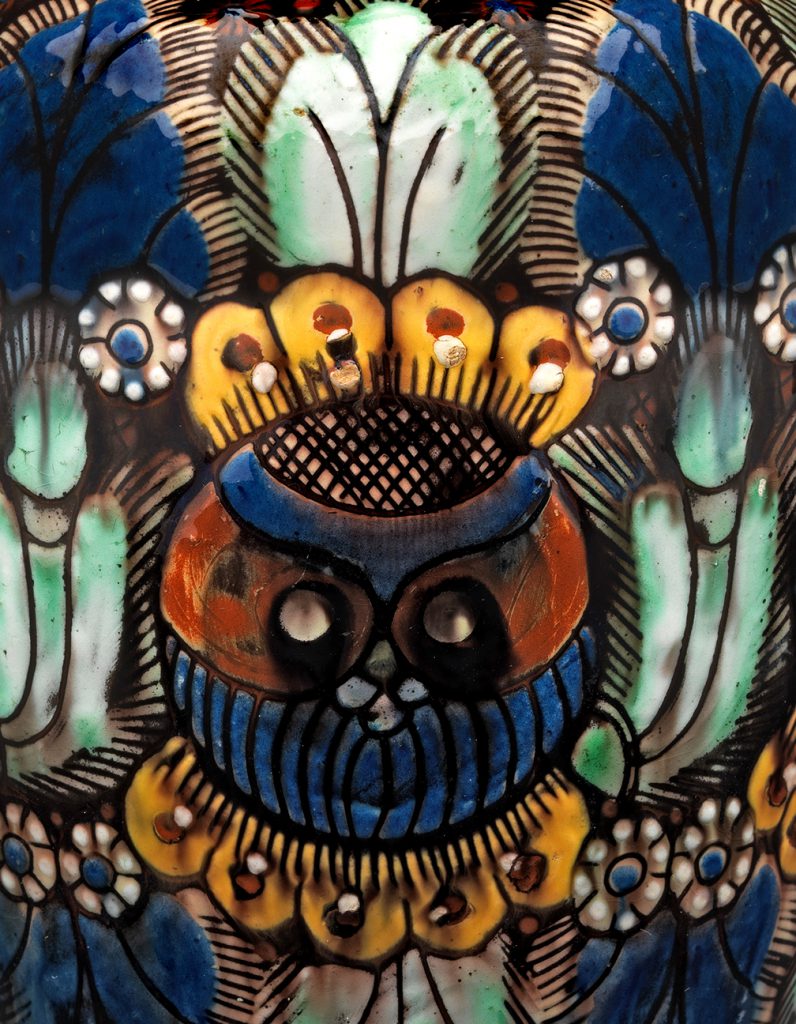
Andreas Heege 2020
Chrutmuster [herbal or plant pattern] is a term used in the Bernese dialect for a type of pattern that was common in the region around Heimberg-Steffisburg and was rooted in the local slip trailed and incised decorative techniques. Based on local flower designs (tulip patterns), the pattern evolved from around 1850, though it is not known which of the potters’ workshops were actually responsible for its development.
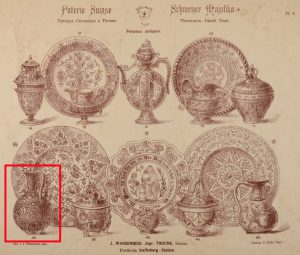
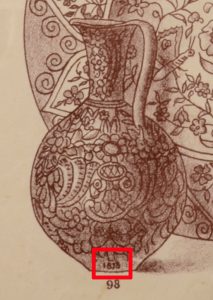
Wanzenried Catalogue 1885, Pl. 6, Stiftung Schlossmuseum Thun, Inv. 4507.
By 1870/1873 the pattern had been developed fully (cf. Wanzenried Catalogue 1885, Pl. 6 No. 98 dated 1873) and was part of the local producers’, i.e. the Heimberg potters’ repertoire alongside pieces of later “Thun majolica”.
The oldest firmly dated ceramic objects bearing the chrutmuster pattern date back to the Paris International Exhibition of 1878 (V&A Inv. 736-1878), though the so-called “Paris ware” produced between 1870 and 1875 had probably already borne the same pattern (see SNM LM-74294); it was first mentioned in writing as “Chrutdecoration” in the Täglicher Anzeiger für Thun (TAT Bd. 3, No. 63) newspaper of 15th March 1879.
Any Swiss potter’s workshop that copied Thun majolica also copied the chrutmuster pattern.

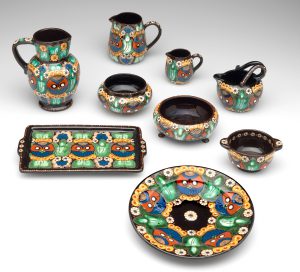

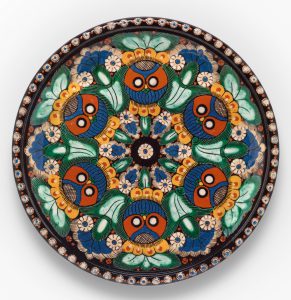
Pottery bearing the chrutmuster pattern from the Musée Ariana in Geneva, various makers.

Production of pottery bearing the chrutmuster pattern, among others, by the company Emil Loder/Adolf Schweizer, Steffisburg (1918-1924).

Chrutmuster pattern, workshop photo Loder/Schweizer, 1918-1924.
Surprisingly, the pattern outlived the Thun majolica ware after 1914 and continued to be produced under the name “Old Thun” pattern by numerous potters in the Canton of Bern until the end of the 20th century (e.g. MAG AR 2012-56-1 to MAG AR 2012-56-23; Heege/Kistler 2017b, 489–500, Fig. 168).
Translation Sandy Haemmerle
German: Chrutmuster (Muster Alt-Thun)
French: Motif aux hiboux
References:
Heege/Kistler 2017
Andreas Heege/Andreas Kistler, Poteries décorées de Suisse alémanique, 17e-19e siècles – Collections du Musée Ariana, Genève – Keramik der Deutschschweiz, 17.-19. Jahrhundert – Die Sammlung des Musée Ariana, Genf, Mailand 2017.

